This document summarizes key concepts from Andrew Ng's lecture notes on reinforcement learning and control. It introduces reinforcement learning as a framework where learning agents receive rewards to indicate good or bad behavior, rather than explicit labels as in supervised learning. Markov decision processes (MDPs) provide a formalism for modeling reinforcement learning problems. The document describes value iteration and policy iteration algorithms for solving finite state MDPs to find the optimal value function and policy. It also discusses estimating transition probabilities and rewards from experience to learn a model of an unknown MDP.
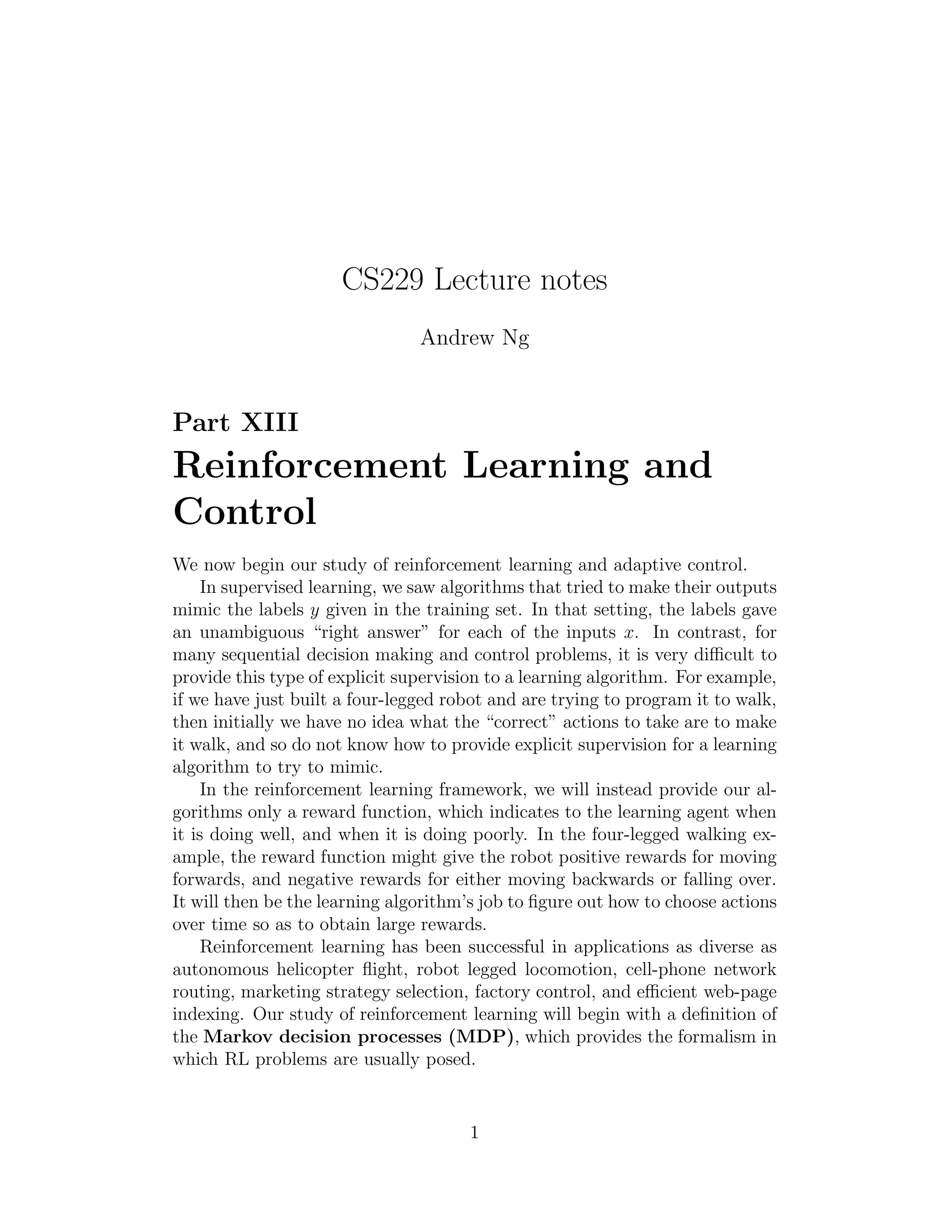
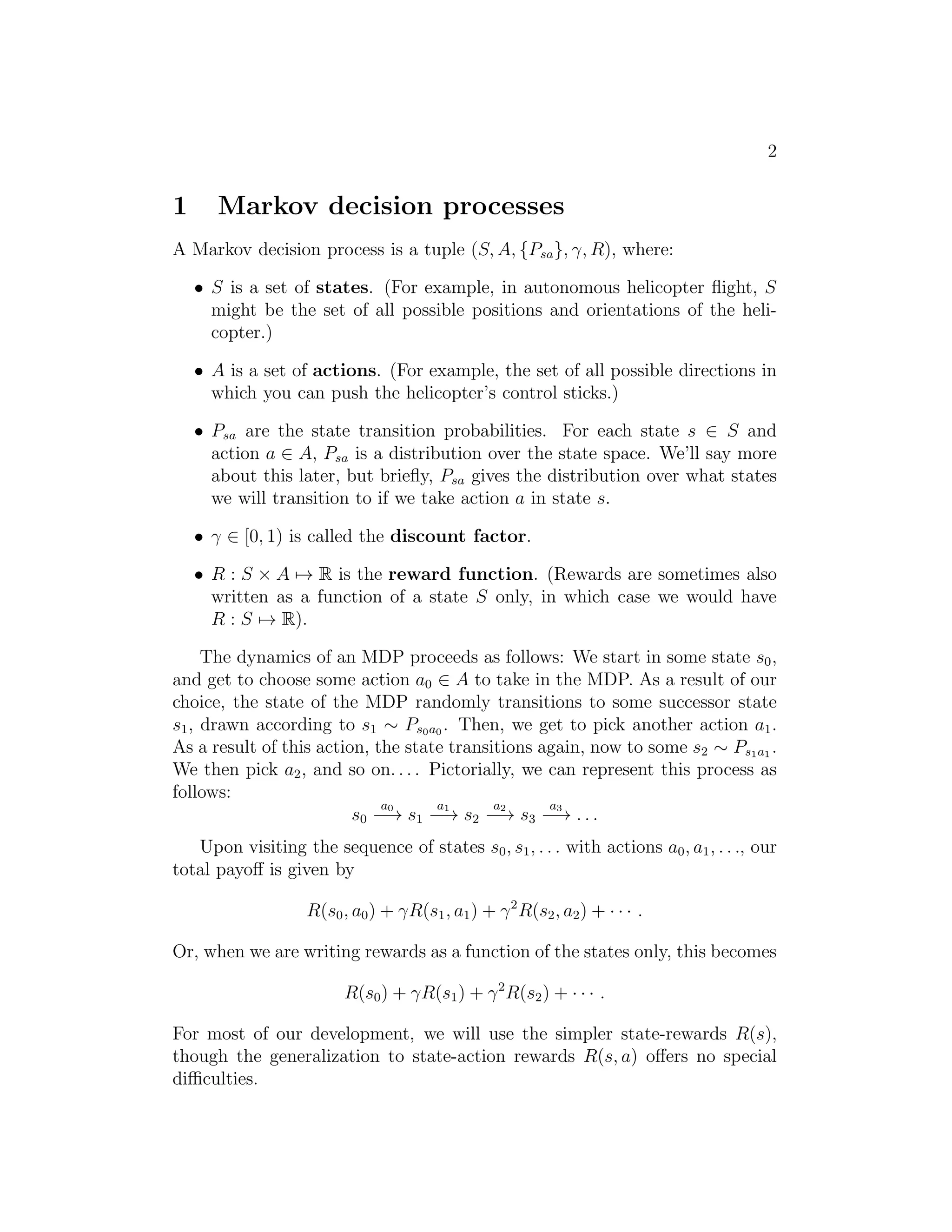
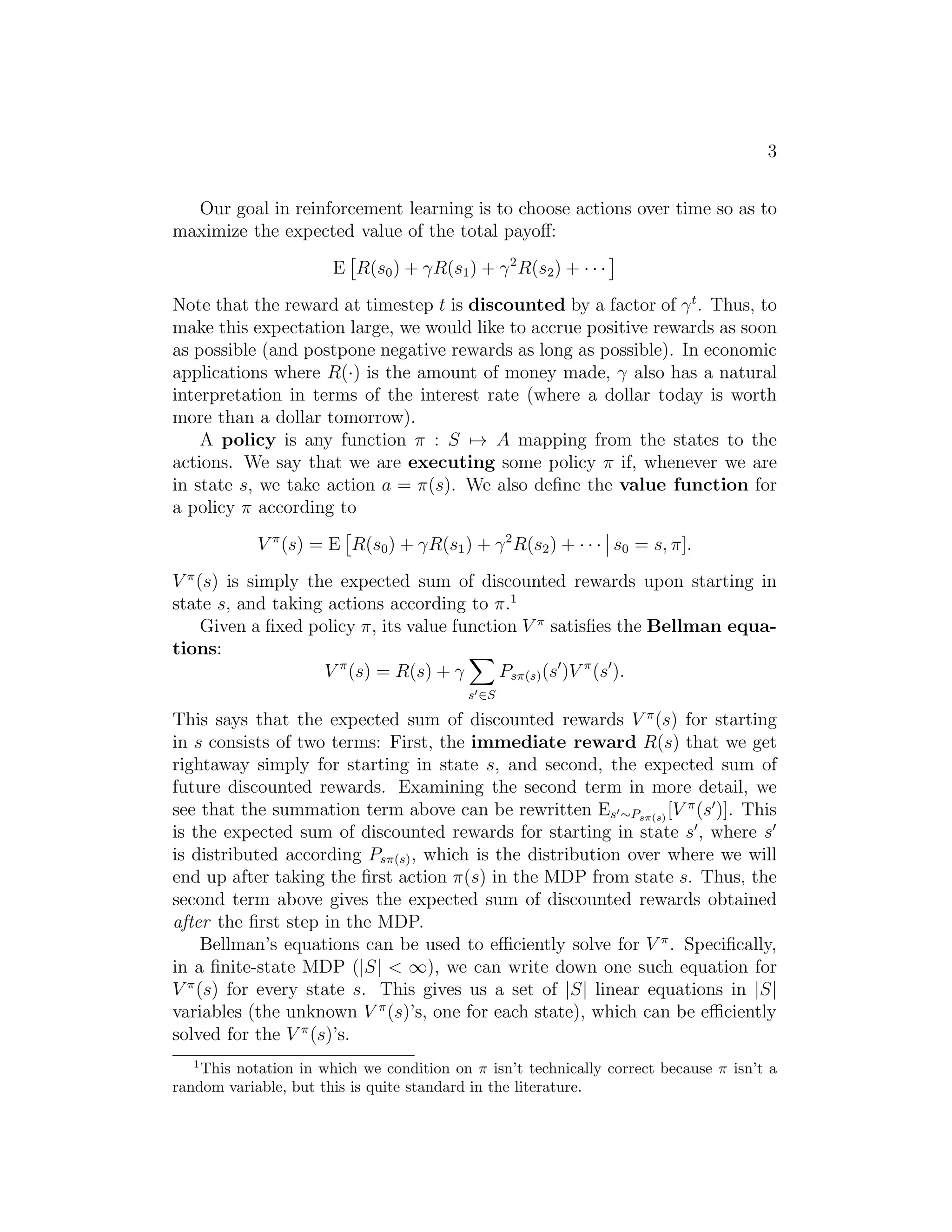
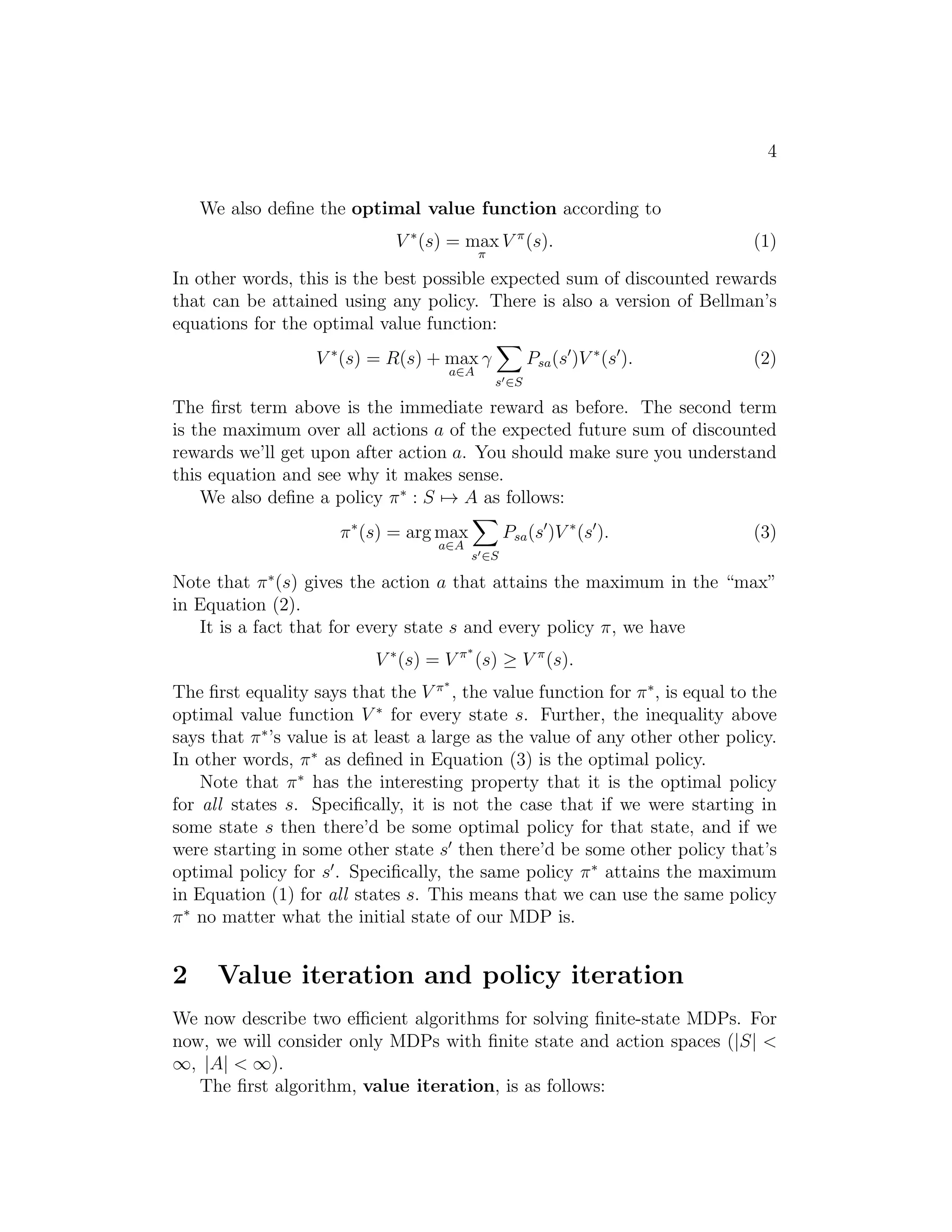
![s0 = s, π].
V (s) is simply the expected sum of discounted rewards upon starting in
state s, and taking actions according to π.1
Given a fixed policy π, its value function V satisfies the Bellman equa-
tions:
V (s) = R(s) + γXs′∈S
Ps(s)(s′)V (s′).
This says that the expected sum of discounted rewards V (s) for starting
in s consists of two terms: First, the immediate reward R(s) that we get
rightaway simply for starting in state s, and second, the expected sum of
future discounted rewards. Examining the second term in more detail, we
see that the summation term above can be rewritten Es′∼Ps(s) [V (s′)]. This
is the expected sum of discounted rewards for starting in state s′, where s′
is distributed according Ps(s), which is the distribution over where we will
end up after taking the first action π(s) in the MDP from state s. Thus, the
second term above gives the expected sum of discounted rewards obtained
after the first step in the MDP.
Bellman’s equations can be used to efficiently solve for V . Specifically,
in a finite-state MDP (|S| ∞), we can write down one such equation for
V (s) for every state s. This gives us a set of |S| linear equations in |S|
variables (the unknown V (s)’s, one for each state), which can be efficiently
solved for the V (s)’s.
1This notation in which we condition on isn’t technically correct because isn’t a
random variable, but this is quite standard in the literature.](https://image.slidesharecdn.com/machinelearning13-140901163712-phpapp02/75/Machine-learning-13-5-2048.jpg)
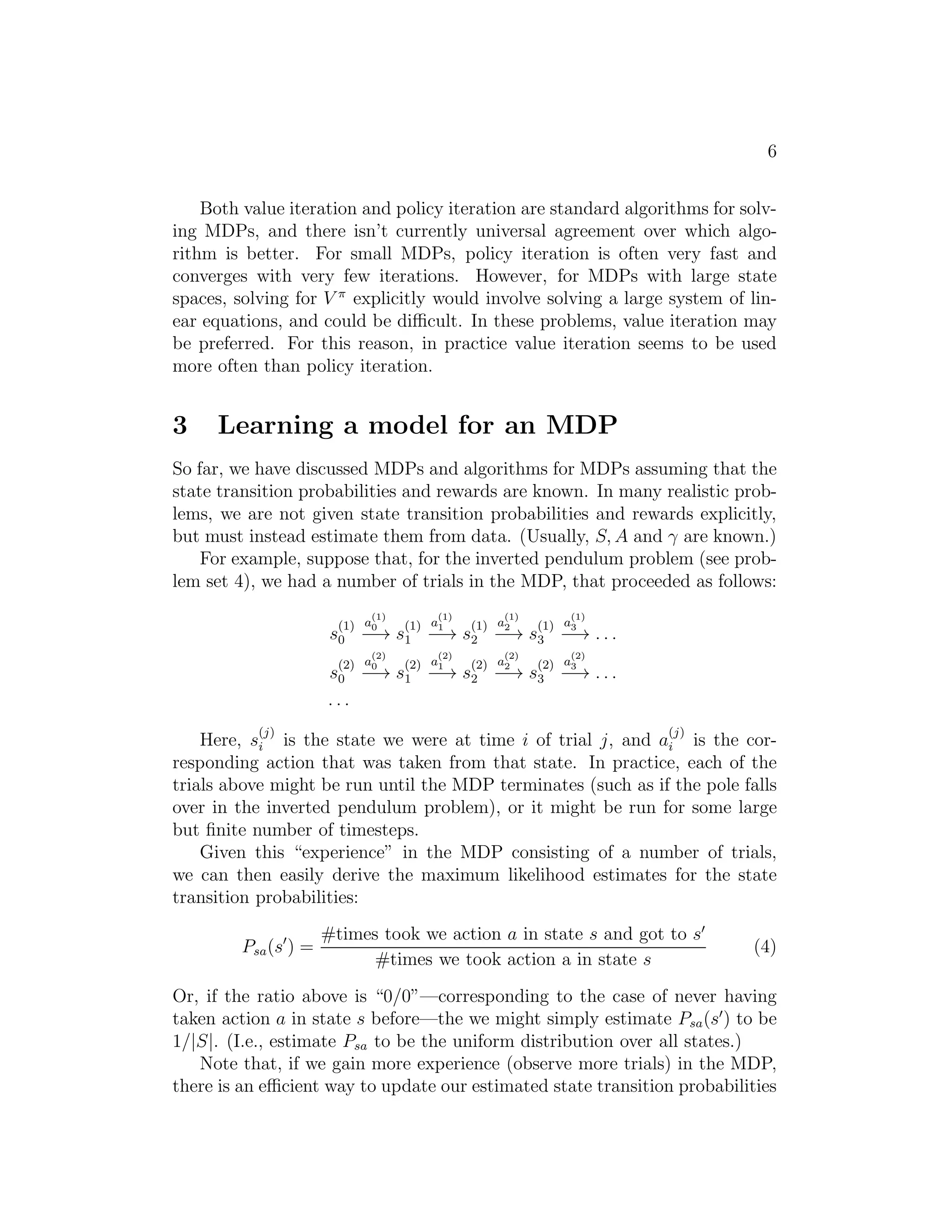
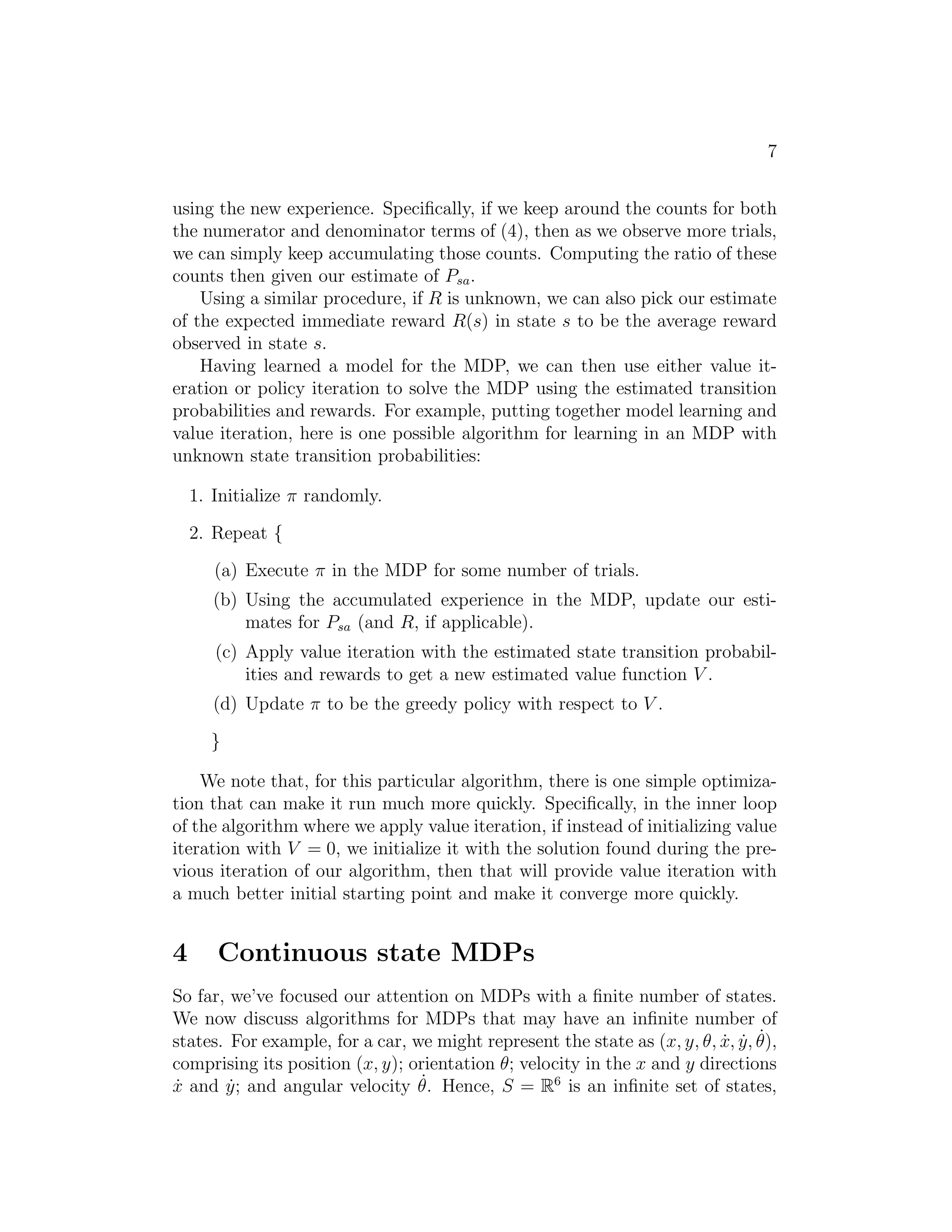
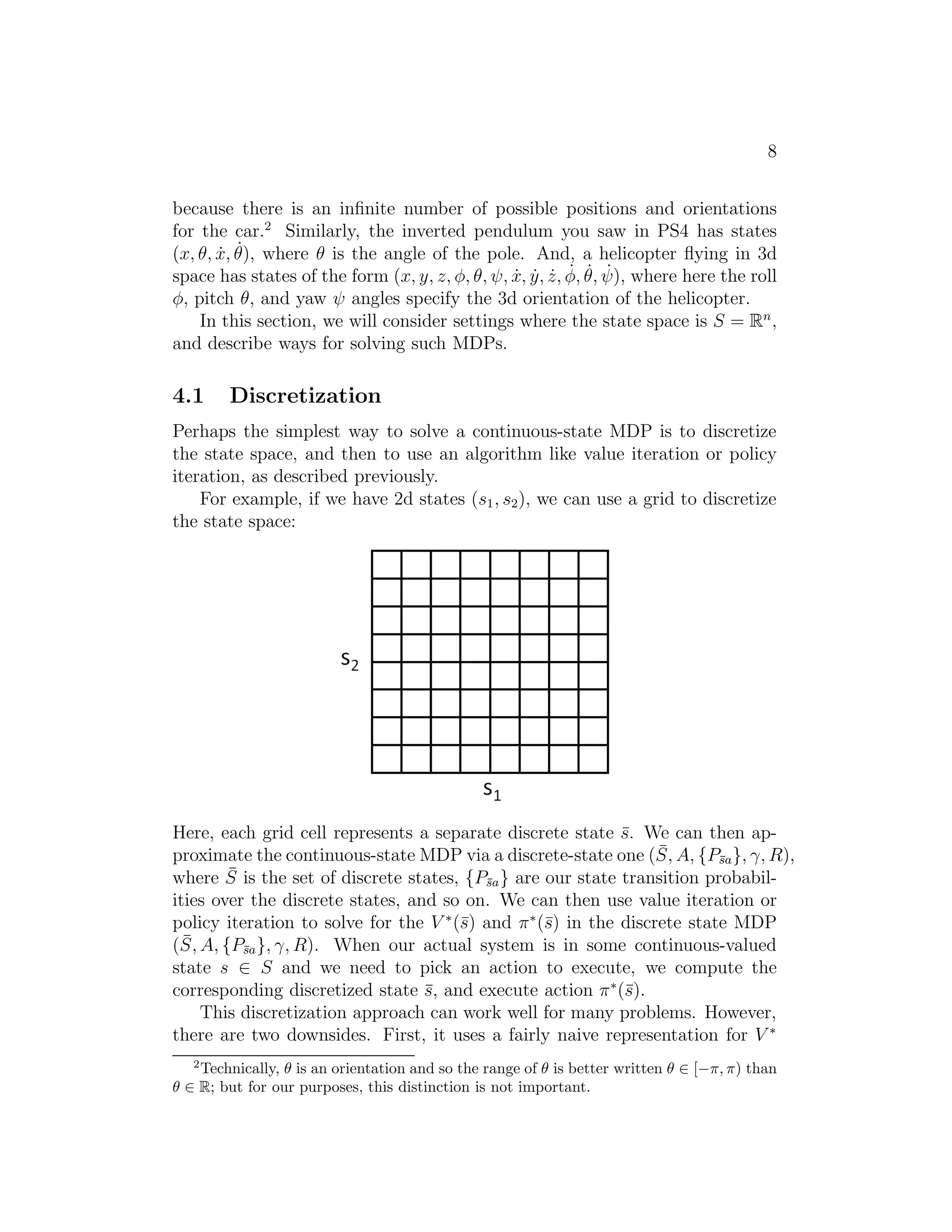
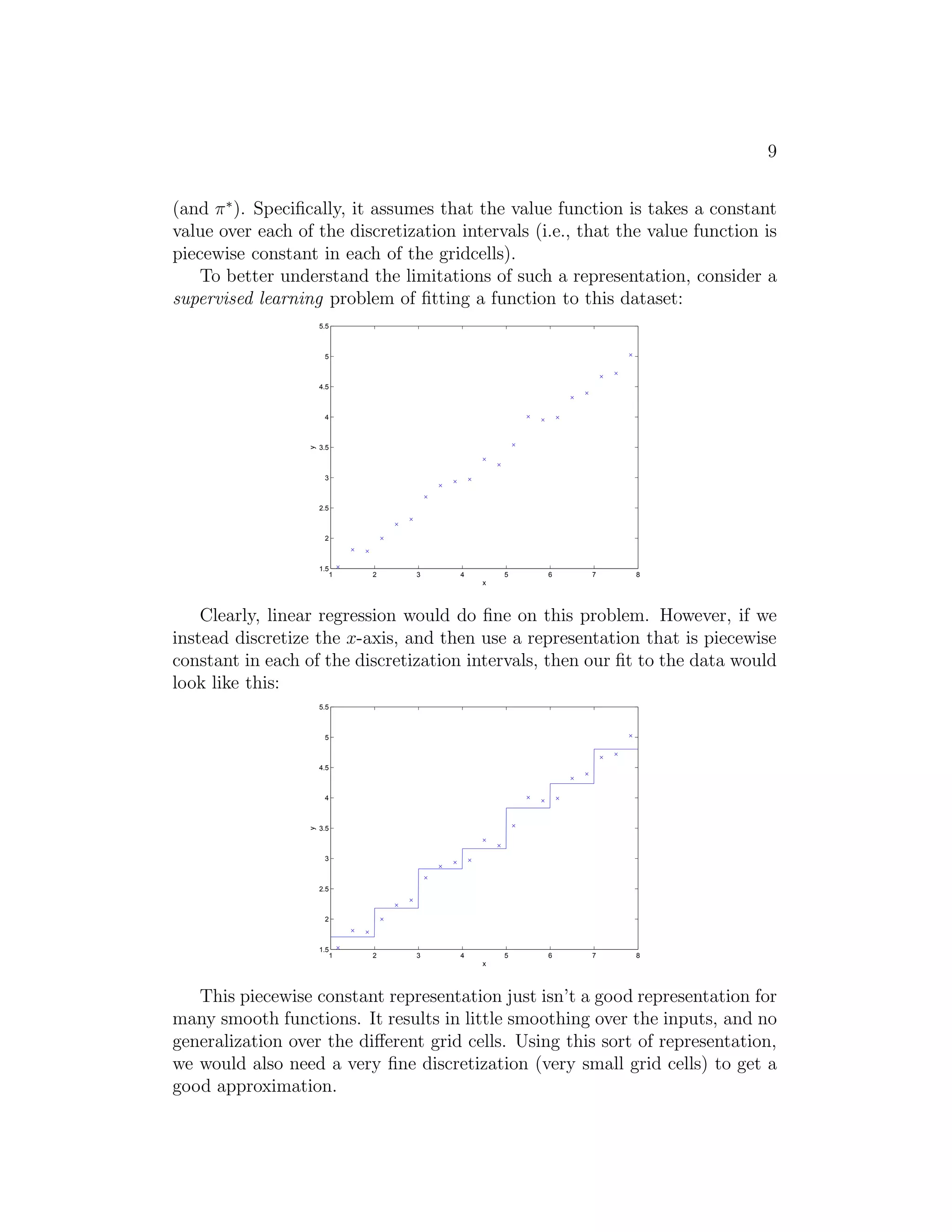
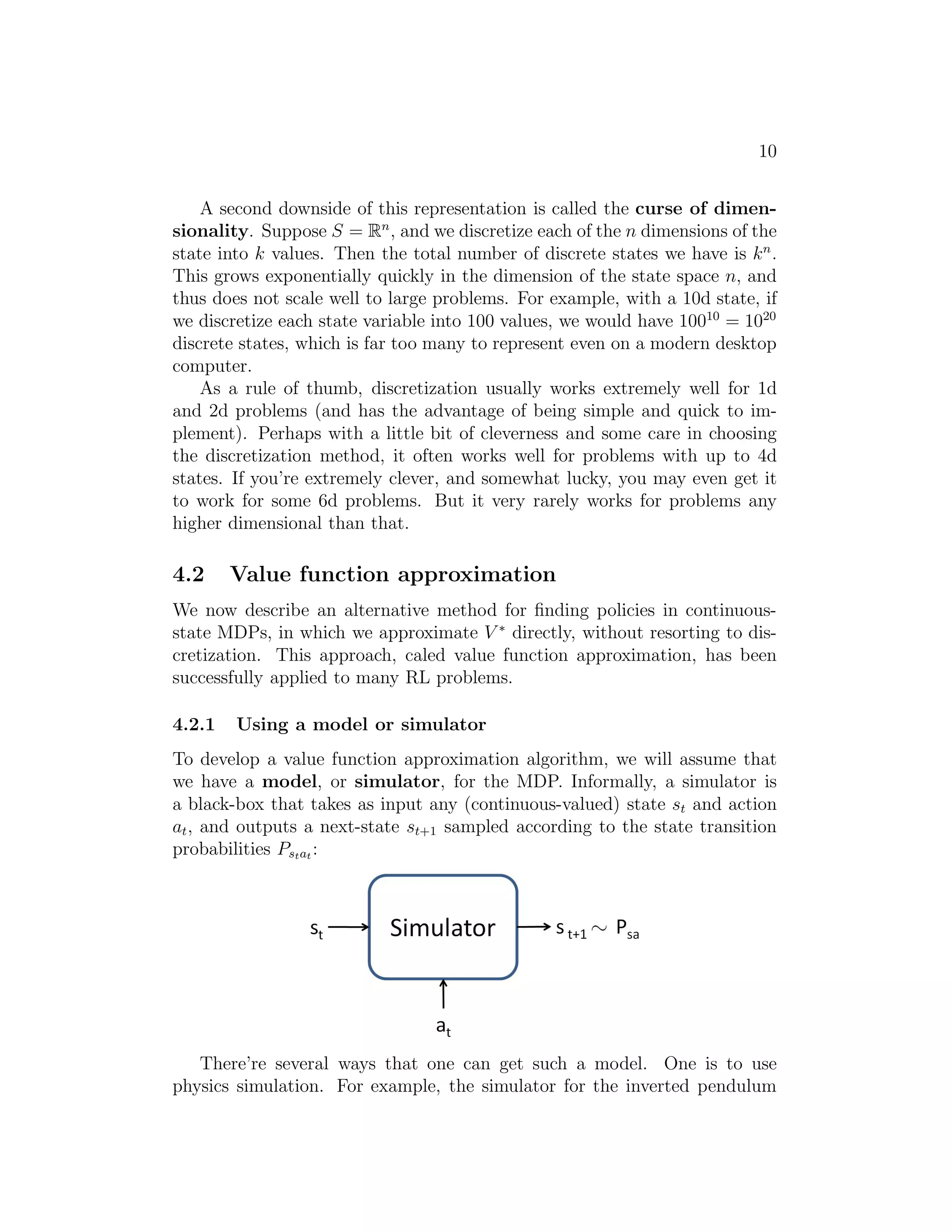
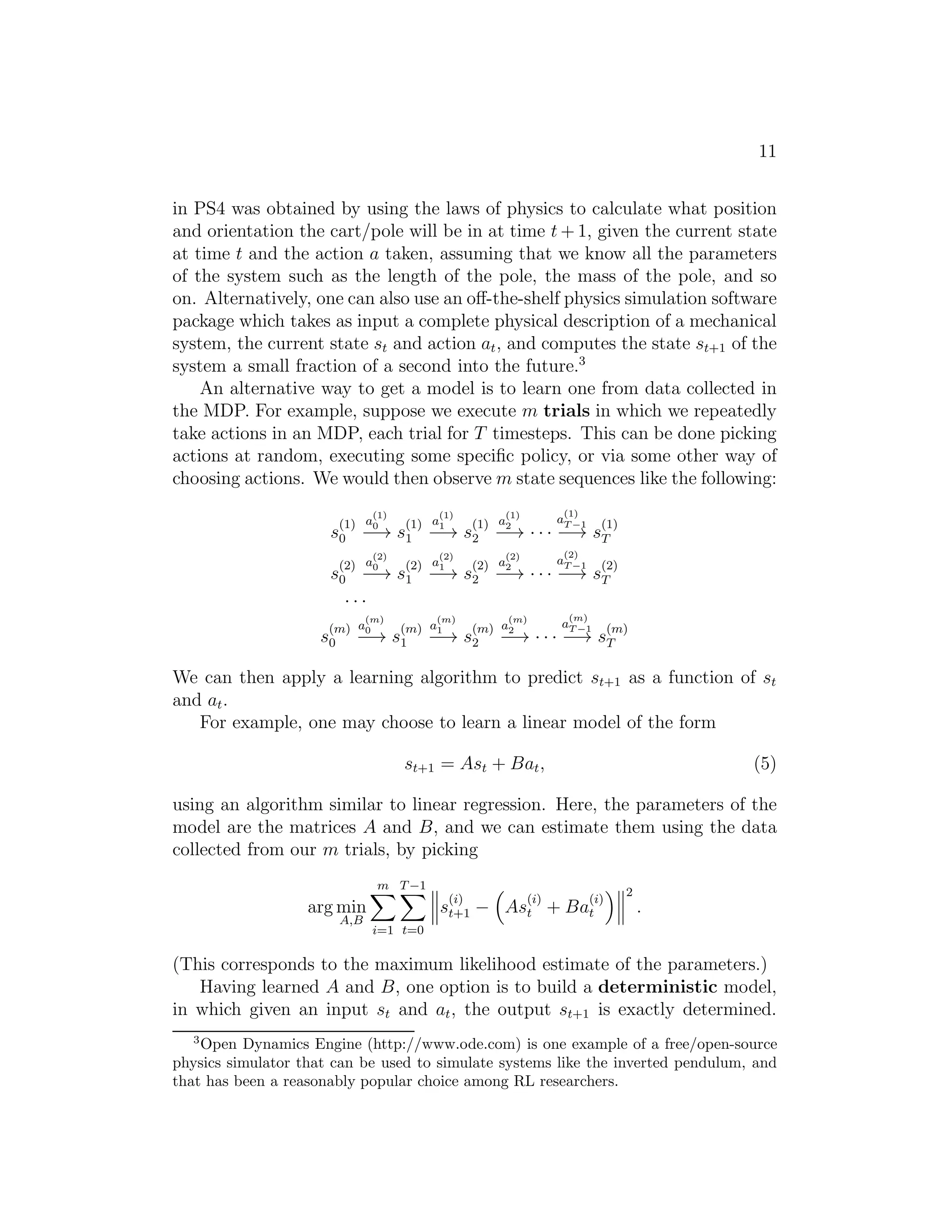
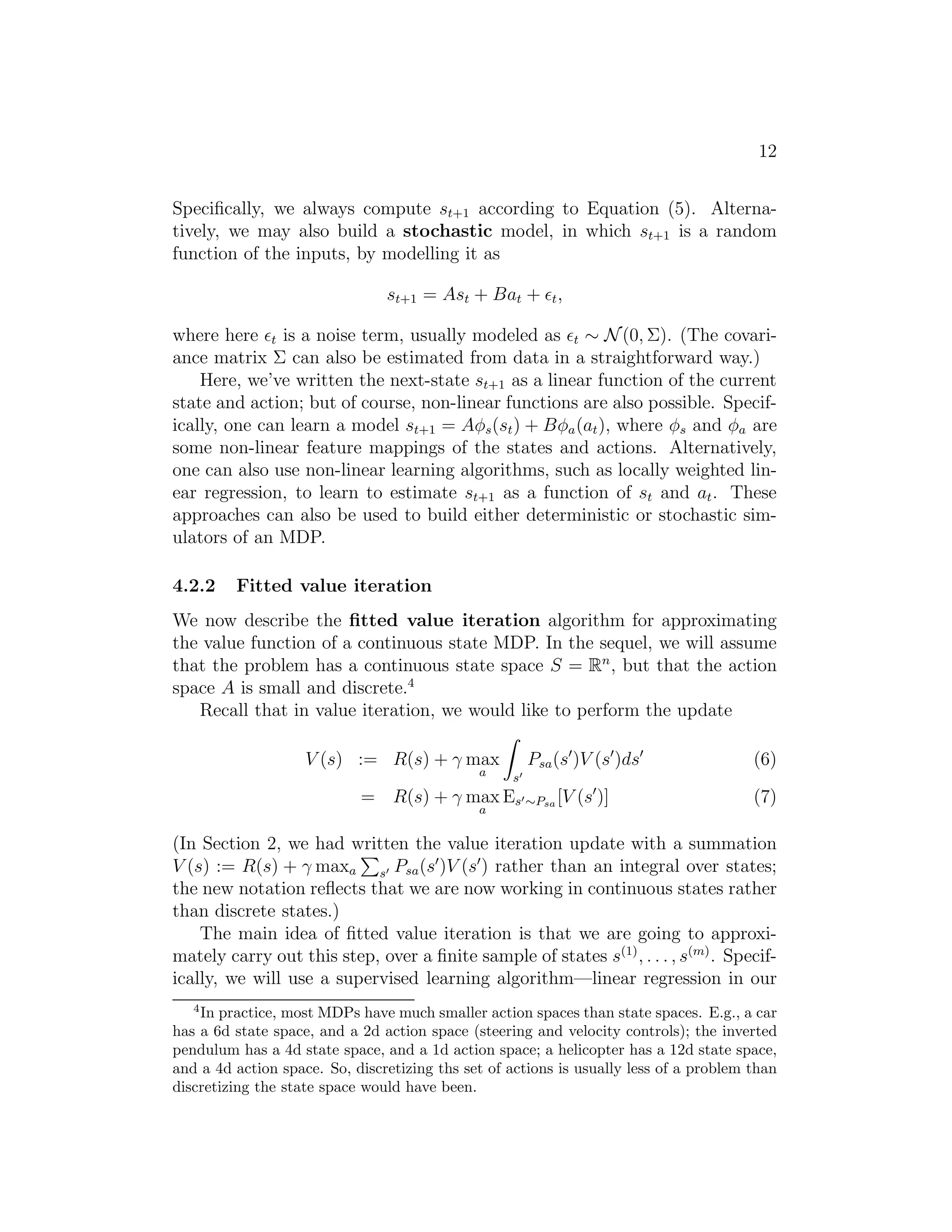
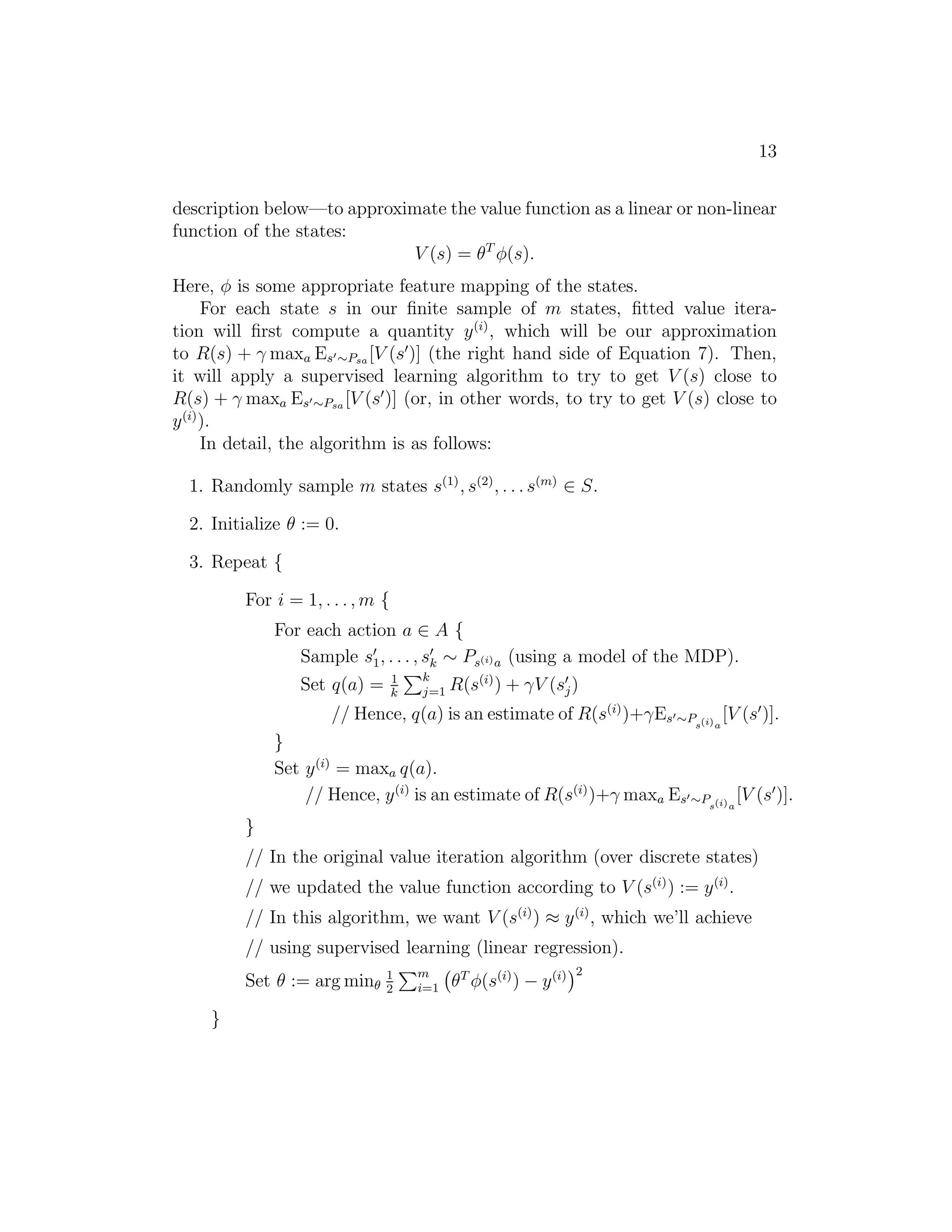
![12
Specifically, we always compute st+1 according to Equation (5). Alterna-
tively, we may also build a stochastic model, in which st+1 is a random
function of the inputs, by modelling it as
st+1 = Ast + Bat + ǫt,
where here ǫt is a noise term, usually modeled as ǫt ∼ N(0,). (The covari-
ance matrix can also be estimated from data in a straightforward way.)
Here, we’ve written the next-state st+1 as a linear function of the current
state and action; but of course, non-linear functions are also possible. Specif-
ically, one can learn a model st+1 = Aφs(st) + Bφa(at), where φs and φa are
some non-linear feature mappings of the states and actions. Alternatively,
one can also use non-linear learning algorithms, such as locally weighted lin-
ear regression, to learn to estimate st+1 as a function of st and at. These
approaches can also be used to build either deterministic or stochastic sim-
ulators of an MDP.
4.2.2 Fitted value iteration
We now describe the fitted value iteration algorithm for approximating
the value function of a continuous state MDP. In the sequel, we will assume
that the problem has a continuous state space S = Rn, but that the action
space A is small and discrete.4
Recall that in value iteration, we would like to perform the update
a Zs′
V (s) := R(s) + γ max
Psa(s′)V (s′)ds′ (6)
= R(s) + γ max
a
Es′∼Psa [V (s′)] (7)
(In Section 2, we had written the value iteration update with a summation
V (s) := R(s) + γ maxaPs′ Psa(s′)V (s′) rather than an integral over states;
the new notation reflects that we are now working in continuous states rather
than discrete states.)
The main idea of fitted value iteration is that we are going to approxi-
mately carry out this step, over a finite sample of states s(1), . . . , s(m). Specif-
ically, we will use a supervised learning algorithm—linear regression in our
4In practice, most MDPs have much smaller action spaces than state spaces. E.g., a car
has a 6d state space, and a 2d action space (steering and velocity controls); the inverted
pendulum has a 4d state space, and a 1d action space; a helicopter has a 12d state space,
and a 4d action space. So, discretizing ths set of actions is usually less of a problem than
discretizing the state space would have been.](https://image.slidesharecdn.com/machinelearning13-140901163712-phpapp02/75/Machine-learning-13-14-2048.jpg)
![13
description below—to approximate the value function as a linear or non-linear
function of the states:
V (s) = θTφ(s).
Here, φ is some appropriate feature mapping of the states.
For each state s in our finite sample of m states, fitted value itera-
tion will first compute a quantity y(i), which will be our approximation
to R(s) + γ maxa Es′∼Psa[V (s′)] (the right hand side of Equation 7). Then,
it will apply a supervised learning algorithm to try to get V (s) close to
R(s) + γ maxa Es′∼Psa [V (s′)] (or, in other words, to try to get V (s) close to
y(i)).
In detail, the algorithm is as follows:
1. Randomly sample m states s(1), s(2), . . . s(m) ∈ S.
2. Initialize θ := 0.
3. Repeat {
For i = 1, . . . ,m {
For each action a ∈ A {
Sample s′
k ∼ Ps(i)a (using a model of the MDP).
1, . . . , s′
k Pk
Set q(a) = 1
j=1 R(s(i)) + γV (s′
j)
// Hence, q(a) is an estimate of R(s(i))+γEs′∼P
s(i)a
[V (s′)].
}
Set y(i) = maxa q(a).
// Hence, y(i) is an estimate of R(s(i))+γ maxa Es′∼P
s(i)a
[V (s′)].
}
// In the original value iteration algorithm (over discrete states)
// we updated the value function according to V (s(i)) := y(i).
// In this algorithm, we want V (s(i)) ≈ y(i), which we’ll achieve
// using supervised learning (linear regression).
Set θ := argmin
i=1 θTφ(s(i)) − y(i)2
1
2 Pm
}](https://image.slidesharecdn.com/machinelearning13-140901163712-phpapp02/75/Machine-learning-13-15-2048.jpg)